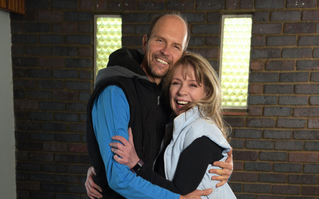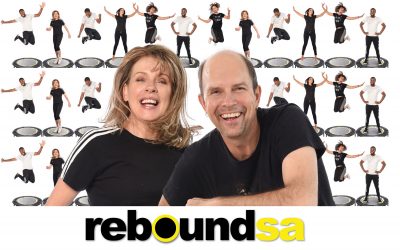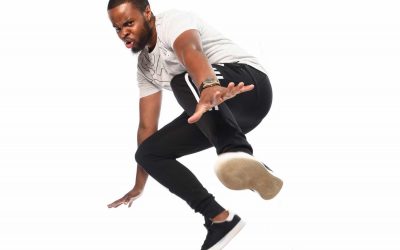Spring vs Bungee Rebounders – why we prefer Springs.
Besides, quality and workmanship – THE MOST important part of a rebounder for the user is THE BOUNCE!!! The “Connectors” (springs or bungee cords) are responsible for creating the buoyancy, reactivity, pace and longevity of the bounce on a rebounder.
Obviously there is always a difference between high and low quality connectors. In this post we refer to connectors that are high quality.
If you’re new to rebounding and have never tried out lots of different rebounders – it can be difficult to know what a good or bad bounce of a rebounder feels like. The only way would be to put different makes and models together to try them out, one straight after the other.
Over the past 20 years we’ve tried and tested just about every model of springs and bungees.
Rebounding is not only our passion, it’s also our business and we have free choice to import, market and distribute any kind of rebounder we choose to – and since bungees arrived in mass around 6 years ago, we’re often asked: which one is best, springs or bungees?
To be fair and to ensure that an unbiased opinion and choice of what we import, endorse and distribute, we brought out loads of high-end samples to test and try out.
Initially, we loved the idea of bungee rebounders and when new, they all had a good bounce.
However, because bungee cords always stretch – the buoyancy, reactivity and the smooth transition required and expected – didn’t last long. This was our only complaint, and we were disappointed because the fad and mass marketing of bungee rebounders was huge – but we just couldn’t be swayed from our preference for Spring Rebounders.



Here’s why:
LONGEVITY
Firstly, all of the features listed below have longevity – which means they LAST – the smooth buoyancy, fluid transition and reactivity of good quality springs last much longer than any other connector.
BUOYANCY
Good Springs are not too hard and not too soft.
A hard bounce can be too jarring with a high impact on your body, especially ankles, knee’s and back – and it’s not much fun to use.
If it’s too soft the bounce can be slow and quite laborious which make doing either very gentle or aerobic moves difficult to do. It can cause pronation and tends to “bottom out” before long.
SMOOTH & FLUID TRANSITION
– The transition happens where your bounce changes direction from moving down to moving back up again – when your feet are at the deepest point on the mat … the connectors stretch out to slow down your descent … they stop for a micro milli second … and then spring back to their original shape and position.
This transition should feel as seamless as possible, no jarring or lagging – just SMOOTH & FLUID.
REACTIVITY
This is an extremely important requirement for a great bounce, and it’s one of the best features of rebounding.
Without lasting reactivity (spring back) your bounce becomes soggy and laborious.
Most high-end bungee rebounders start out feeling reactive, but unfortunately this starts to wane when bungee cords start to stretch. We have found that high quality springs offer the longest lasting and consistently effortless “Spring Back” which is one of the things that make rebounding so much fun.
Reactivity eases and reduces the effort to constantly bounce yourself UP and off the mat with each bounce – and keeps you going.
Remember, you bounce approx. 120 times per minute, which is 1200 bounces in 10 minutes –
and 4800 bounces in a 40-minute session!
Jumping up and down on the floor or on a mat that is either too hard or too soft (without the right reactivity) can be painful, exhausting, not much fun – and probably not something you’d look forward to doing regularly.
VERSATILITY
Suitable for all ages and uses – from low and gentle health bouncing – to fast and vigorous workouts.
LOW MAINTENANCE
Replacing springs is rare – but are quick and easy to replace if ever needed.
EASY TO ELLIMINATE SQUEAKS
A popular claim is that spring rebounders can become noisy. Yes, spring rebounders can develop a squeak – but so can bungees. It’s quick and easy to eliminate noise on spring rebounders with a dab of grease (Vaseline works well too), but the only way to eliminate noisy bungees – is to replace the cords with new ones.
PRICE
Oddly enough – we have found that bungee cord rebounders are actually easier, and often cheaper to manufacture that spring rebounders. However, because bungee rebounders are a relatively new concept with mass marketing increasing their popularity – they are often sold at much higher prices.


CONCLUSION
The bounce of a high-quality rebounder with good spring has a much longer lasting bounce. It has a superior ability to retain smooth buoyancy, reactivity, pace and transition. It’s easy to keep the bounce silent and maintenance is low. Amazingly it’s almost always more competitively priced and can be used by all ages for all kinds of bounces and intensities.
When designed and manufactured to a very high standard –
Quality spring rebounders are our #1 choice.

More from this series
How did it all start? – Pt.3
It was 2007. Our first order of 1100 trampolines were sitting proudly in our store room. Our excitement at now being the go-to supplier of quality rebounders in South Africa, was high. Our marketing plan was organic as we realized early on that most people thought...
The Search for the best supplier!
2007 was a very exciting time for us. Our new passion for rebounding made us want to share it with our world. We were doing talks anywhere and everywhere. Rooms full of curious sceptics suddenly changed to full on rebounding fans, and were all lining up to find out...
How did it all start? – Pt.1
Being the biggest and longest running importers, suppliers, writers and trainers in South Africa’s rebound industry – we are often asked: “How did it all start?” In the 1990s we were running our Natural Health training academy in Johannesburg,South Africa teaching...
10 Years Later
In September 2007, a massive hauler truck pulled up outside our gate – and a team of 16 people offloaded our first container of rebounders. There were rumours at the time that rebounding could be a just passing phase – but we were besides ourselves with excitement,...
THE BENEFITS OF REBOUNDING
Besides the many health and fitness benefits – people who rebound find they are able to work longer, sleep better, and feel less tense and nervous. One of the immediate effects after a session is that you feel alive and energised – and this feeling can last for hours...
Bouncing Effectively
Some of us instinctively turn into little animals when we step on a rebounder – leaping about like crazy. This is natural – and you’ll get there, but to gain maximum benefit you need to include a few simple, but crucial steps. 1) Use a good quality rebounder. Low...






